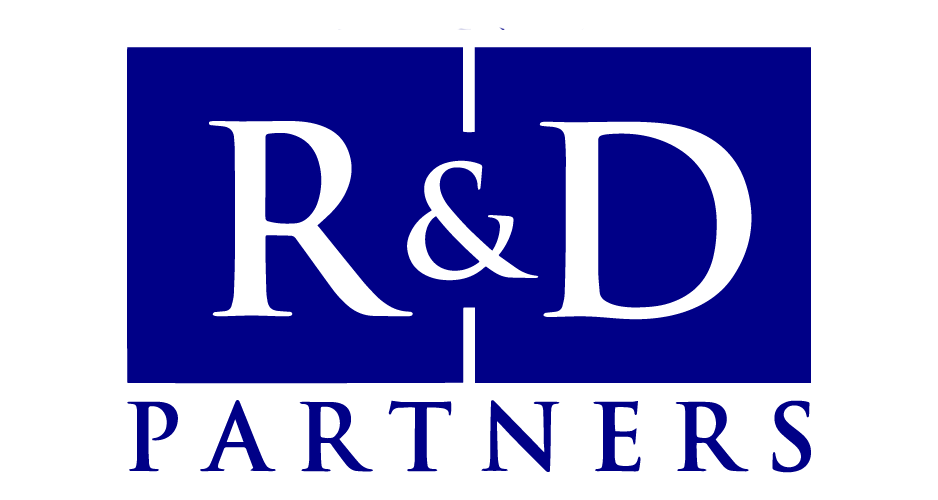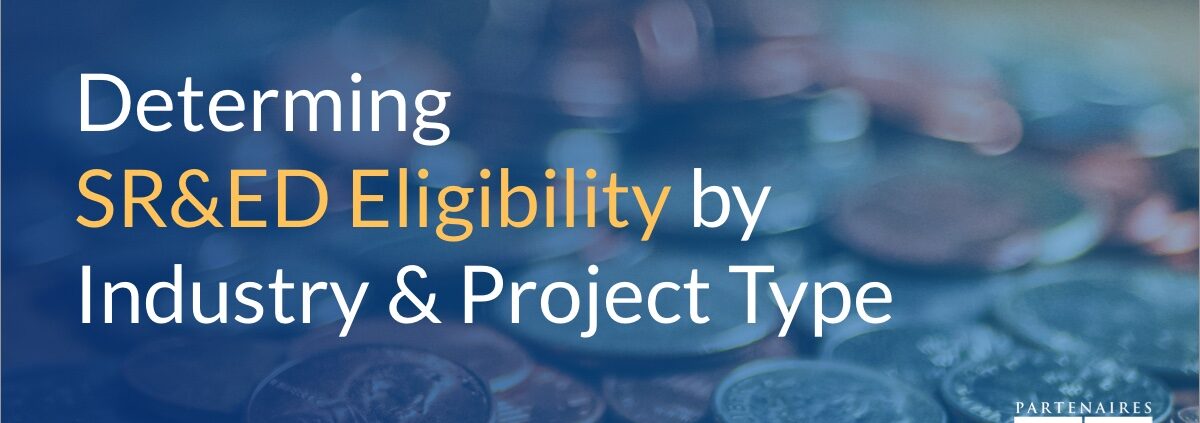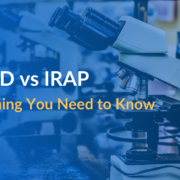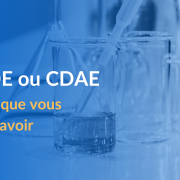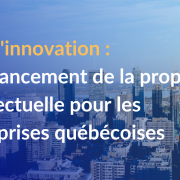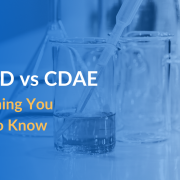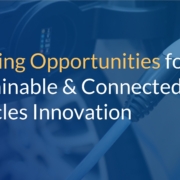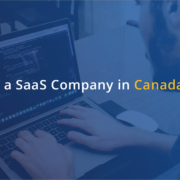Determining SR&ED Eligibility by Industry and Project Type
Introduction:
Prior to the COVID-19 pandemic, Ibis World predicted that, over the next five years, the engineering services industry in Canada would begin to grow once more, having contracted following a drop in the price of crude oil in 2015. The field of biotechnology was similarly expected to expand. Though government assistance programs will help offset the impact of the COVID-19 pandemic, it’s unlikely that either industry will meet their original projections. Nevertheless, programs like SRED still exist to support activities within these industries, provided businesses know how to claim them.
Resources that describe general SR&ED eligibility criteria are abundant, but it is more difficult to find information related to specific industries or project types. For example, if you are in the aerospace industry and qualification testing takes up most of your fiscal period, how eligible is this activity? In this simple guide, we break down some key concepts and questions that may help you discern between eligible and non-eligible activities in certain industries.
Aerospace:
Often, the recipe for R&D and technology uncertainty in the aerospace industry comes from the fact that the field is stringent, regulated, and competitive . Technological objectives are constantly changing and becoming increasingly challenging to meet. Further, these objectives are often competing (e.g., reduced costs with increased performance) and demand experimental development to determine whether or not they can be met.
If your project is fairly mature and undergoing various rounds of certification testing, determining eligibility can be trickier. However, it is also worth noting that uncertainties can often be rooted in the sensitive nature of engineered goods and services being directly utilized by humans with serious safety implications. In the aerospace industry, durability and safety are typically expressed and certified under the following terms: 1) airworthiness (flight has been certified to be operative in air with passengers) and 2) flight availability (expressed as the probability of a fault occurring every flight hour, which must meet federal standards). As such, if there are uncertainties related to flight performance and safety that have yet to be understood and resolved, SR&ED continues, and related project activities could be eligible.
If you are able to answer “yes” to any of the following questions about your project, then related activities could be SR&ED eligible:
– Are there remaining tests required to prove the flight availability of your newly developed aerospace component (e.g., engine control software) in several flight and environmental scenarios?
– Is there still technological uncertainty that requires experimentation to determine whether objectives defined at the outset can be achieved?
– Are you still learning about interactions between control laws and flight performance in various flight maneuvers and environmental scenarios?
In addition to these scenarios, unexpected failures may arise during any stage of development and certification, necessitating further experimental investigation and SR&ED eligible activities.
Electrical Engineering, Electronics, & Control Systems:
Many widely-known theoretical tools have been established to explain and model phenomena in the areas of electronics, control systems, and electrical engineering . However, novel application of these theoretical tools in various devices and contexts may uncover complexities that necessitate experimental development, as modeling tools alone cannot accurately predict outcomes. What’s more, certain modeling efforts may be too computationally intensive, implying large costs and extensive development times. From these limitations, an opportunity for SR&ED occasionally arises as newer algorithms and modeling methodologies are developed, or as assumptions are made that must be experimentally evaluated. When developing new material systems and structures for semiconductor devices, antennas, and flexible transmission lines, for example, and subjecting these to uncommon signal frequencies and extreme environmental conditions, characterization activities that attempt to fill in gaps in the available knowledgebase could be eligible.
If you answer “yes” to any of the questions below, you could recover some of your R&D costs through funding programs like SR&ED.
– Are you developing new tools and algorithms to model otherwise complex and computationally exhaustive phenomena?
– Are you attempting to advance the state-of-the-art in microwave theory, signal processing, or non-linear control theory?
– Are you exploring new materials, processes, and leveraging quantum and electromagnetic theories to build next-generation semiconductor devices?
– Have you presented the theoretical basis to your current development at an IEEE conference?
– Does your project also add new knowledge to the fields of sensing, physics, chemistry, or signal processing?
Biomedical & Pharmaceutical Sciences:
Drug development and medical device development can be an expensive, multi-year process, but the good news is that many of these costs can be offset by several government-backed funding programs in Canada. From a SR&ED point of view, research and development in the life science sector is eligible on many fronts, compared to other technological sectors. For example, it is often clear what the established state-of-the-art is due to a vast collection of up-to-date publications concerning syntheses and clinical trials, the systematic, scientific approach demanded by SR&ED, and the uncertainty at different stages of development related to the efficacy, safety, and performance of chemical compounds and devices that interact with the human body. Given this, if you answer “yes” to the following questions, you’re likely eligible for SRED:
– Are you developing chemical compounds that interact with the human body?
– Are you dealing with scalability issues in large-scale synthesis?
– Are you building in vivo medical devices?
AI/Machine Learning:
Growth in the AI/Machine Learning industry has been rapid and widespread over the past few years. Accordingly, research institutions and industries alike that leverage AI/Machine Learning continue to be rewarded with lucrative funding opportunities. Naturally, the competition for securing these funds is also growing, and the bar continues to rise, especially where SR&ED eligibility is concerned. Nonetheless, if you are advancing the field of AI/Machine Learning or utilizing it to supplement your products or processes, we identified a few questions below that may help you better understand how eligible your AI/Machine Learning based project may be. If you answer “yes” to any or all of these questions, your projects are likely eligible:
– Would some of your work be potentially publishable in top-tier conferences in machine learning or directly advances a specific machine learning topic from a published resource?
– Are you dealing with strict performance requirements that, for example, encourage you to develop scalable and untested models and algorithms that can work with less data?
– Would your AI efforts and advancements impact another field of science like biology, chemistry, or agriculture?
Manufacturing:
Though SRED eligibility may be less common where traditional manufacturing is concerned, opportunities could arise when significant improvements to a product or existing process are sought, especially if artificial intelligence or advanced 3D printing can be leveraged.
If you answer “yes” to any or all of these questions, your manufacturing projects may be eligible:
– Are you attempting to increase production efficiency or adhere to more strict environmental regulations by applying technologies or materials that would not be conventionally used for your application?
– Additionally, does this require extensive experimental iterations?
– Are you adding new knowledge to other fields of science and technology, for example, processing advanced thermoplastics?
Conclusion:
It is important to examine both the experimental tasks and industry in which they are being undertaken to evaluate the eligibility and risk of a potential SR&ED project. Certain industries lend themselves well to SRED claims, while others are less obvious and more problematic. Having said that, we have successfully claimed SRED in some of the most unlikely industries, and there are a number of elements that can be incorporated into the process of filing a claim that will increase its chance of success. Please reach out to us if we can help you navigate the eligibility of a potential claim and ensure that all the possible steps are taken to maximize it and reduce the related risk.
